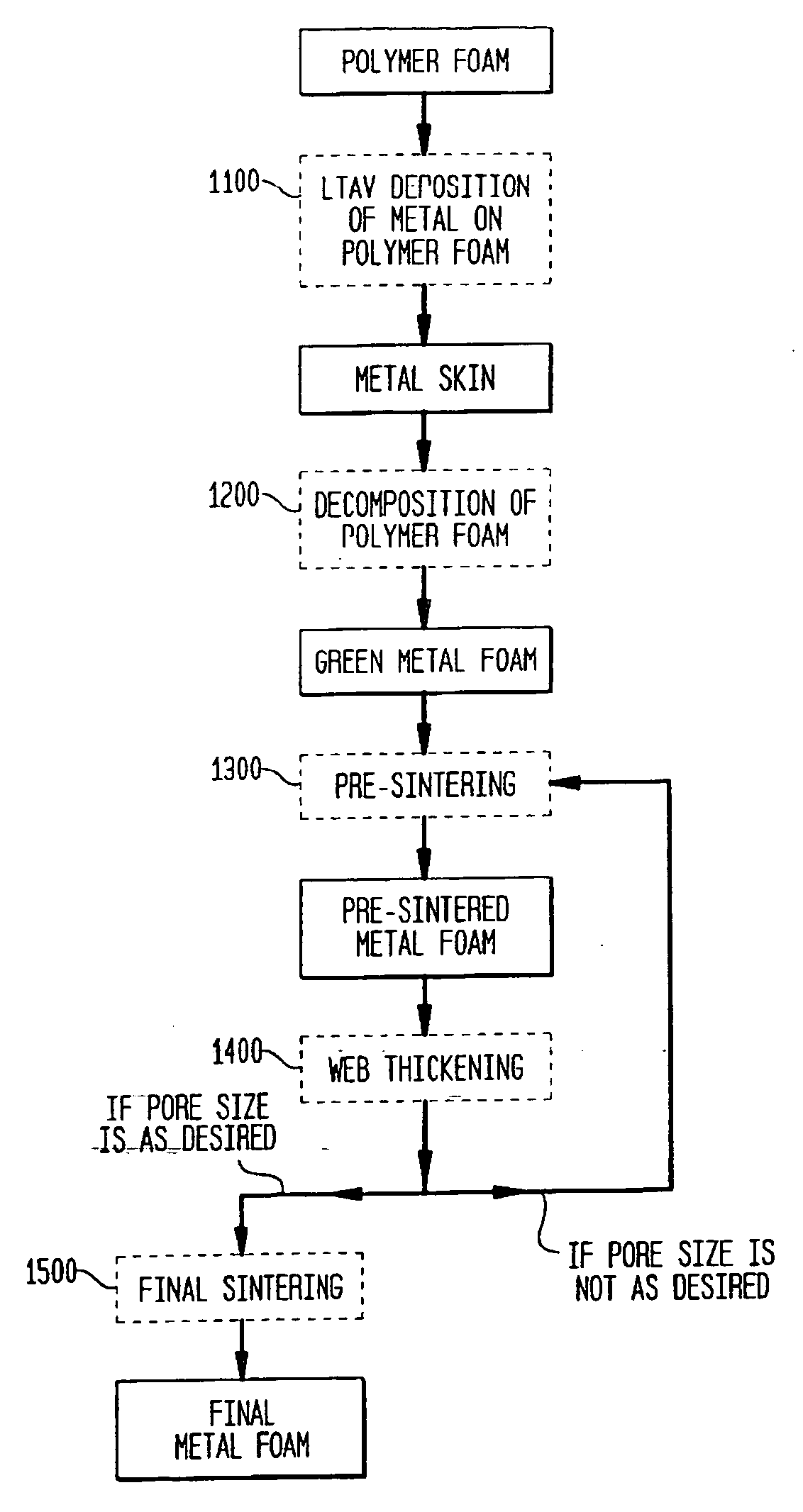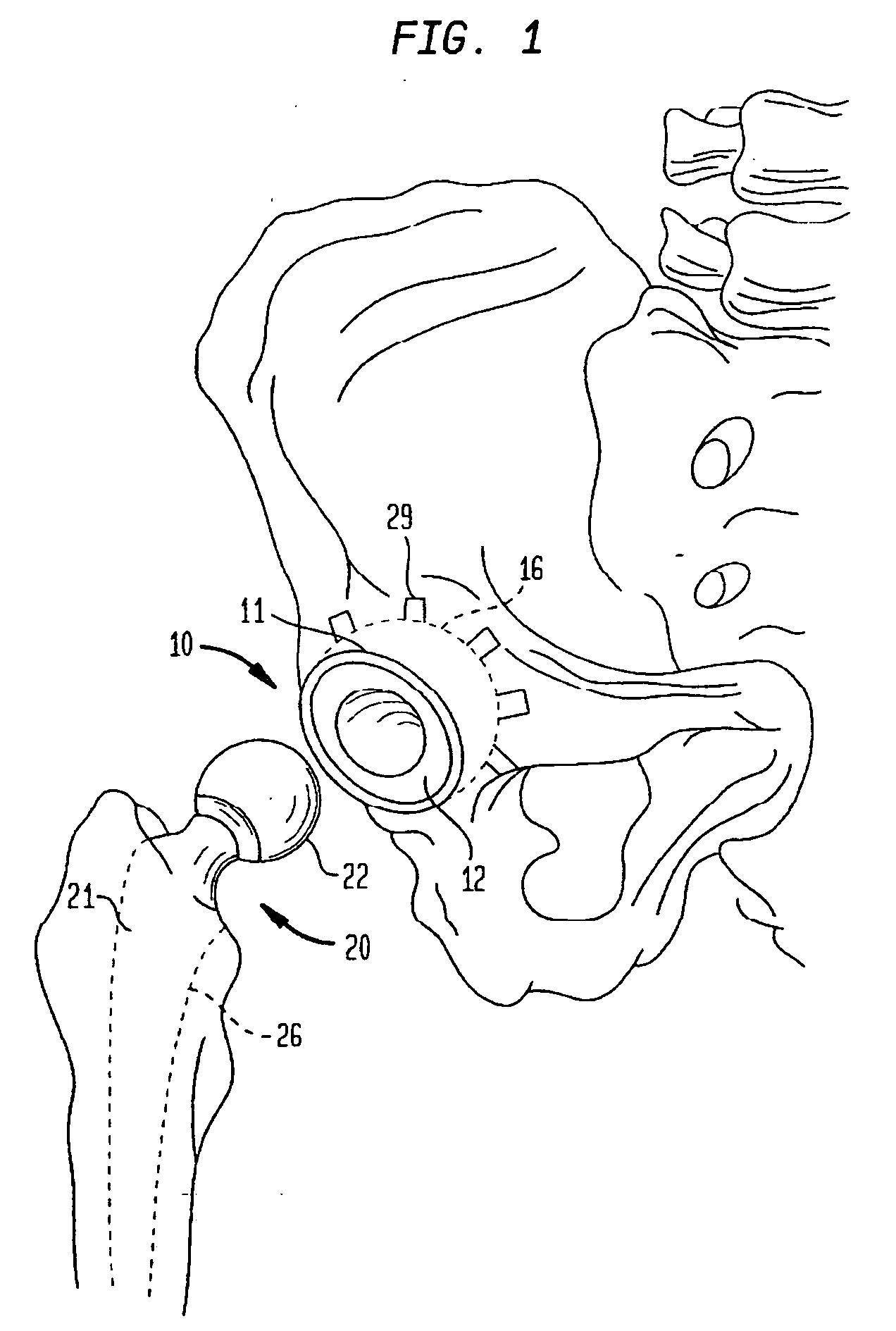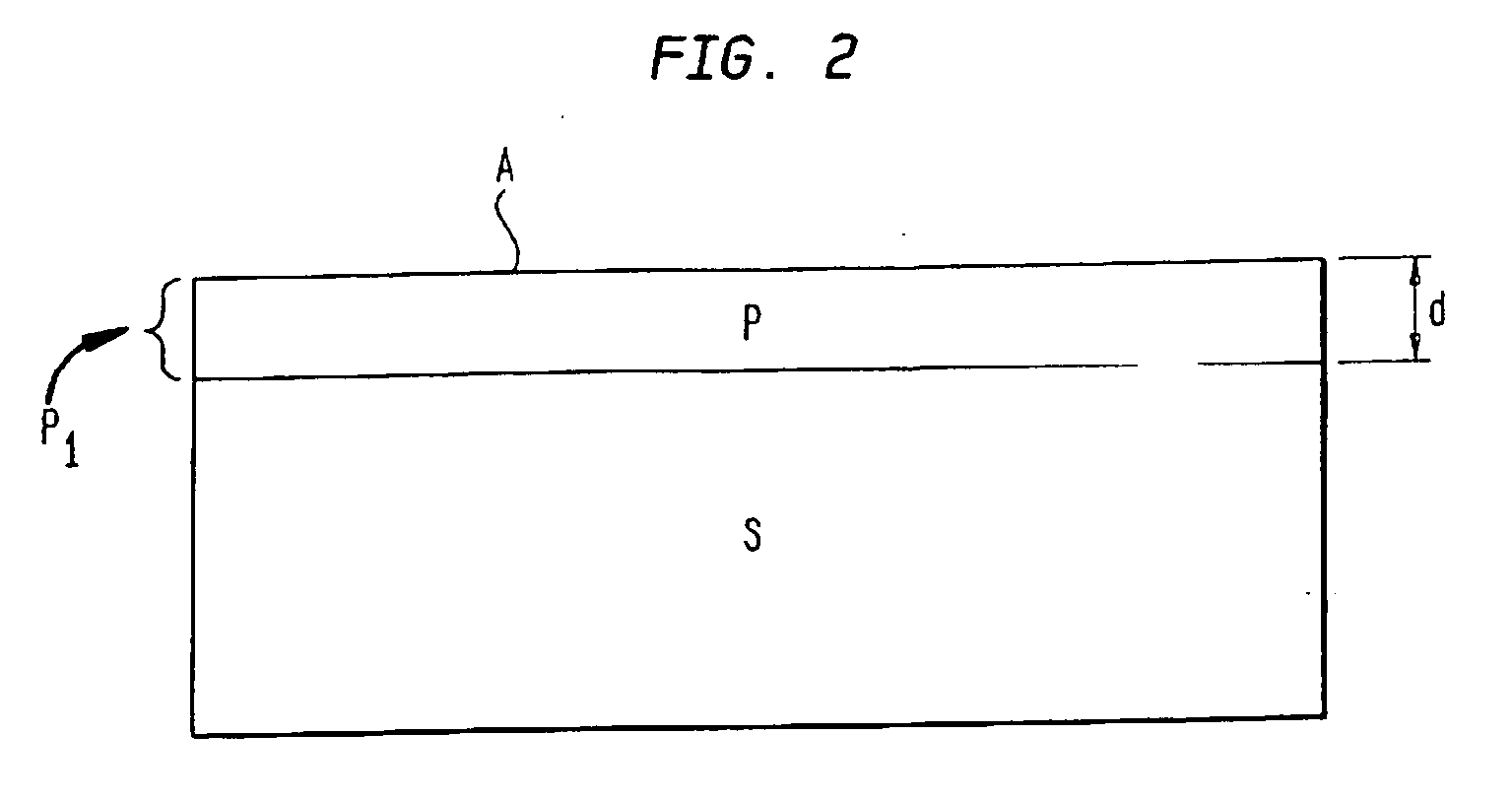Porous metallic scaffold for tissue ingrowth
a technology of metallic scaffolds and tissue ingrowth, which is applied in the direction of prosthesis, impression caps, osteosynthesis devices, etc., can solve the problems of high undesirable replacement of implants, limited range of motion, and deterioration of human bone structure, and achieves the effect of reducing the risk of fracture, and reducing the range of motion
- Summary
- Abstract
- Description
- Claims
- Application Information
AI Technical Summary
Benefits of technology
Problems solved by technology
Method used
Image
Examples
example 1
Preparation of an Acetabular Cup Implant
[0124] It should be understood that while an acetabular cup implant is illustrated, this should not be considered a limitation on the scope of the invention.
[0125] A. Formation of Green Foam.
[0126] A block of polyurethane (PU) foam (Foamex, 950 μm, 58±2 ppi) is machined to a thickness of 1.5 mm and desired size and shape matching a shell of an acetabular cup. The resulting PU foam shell is slightly oversize (˜3%) with respect to the size of the shell of the acetabular cup. The PU foam shell is subjected to LTAV deposition of titanium at 93° C. The side of the PU foam shell that will face the acetabular cup shell (ID side) is subjected to deposition for approximately 53 hours, whereas the deposition of titanium on the other side of the PU foam shell (OD side) is carried out for approximately 15 hours. The deposition is concluded when the thickness of the titanium coating reaches approximately 35 μm on the ID side and approximately 10 μm on t...
example 2
[0133] The shell is processed as in the Example 1, but instead of the two powder treatments, the foam is thickened by vapor deposition (e.g., LTAVD, PVD, or CVD) of titanium until a 150-200 μm layer is deposited.
example 3
[0134] The shell is processed as in the Example 1, but the pore size of the polyurethane foam is 924 μm±89 μm, the pore size of the green foam after LTAV deposition is 967 μm±82 μm, and the pore size of the final foam is 614 μm±67 μm.
PUM
| Property | Measurement | Unit |
|---|---|---|
| Length | aaaaa | aaaaa |
| Length | aaaaa | aaaaa |
| Fraction | aaaaa | aaaaa |
Abstract
Description
Claims
Application Information
 Login to View More
Login to View More - R&D
- Intellectual Property
- Life Sciences
- Materials
- Tech Scout
- Unparalleled Data Quality
- Higher Quality Content
- 60% Fewer Hallucinations
Browse by: Latest US Patents, China's latest patents, Technical Efficacy Thesaurus, Application Domain, Technology Topic, Popular Technical Reports.
© 2025 PatSnap. All rights reserved.Legal|Privacy policy|Modern Slavery Act Transparency Statement|Sitemap|About US| Contact US: help@patsnap.com



